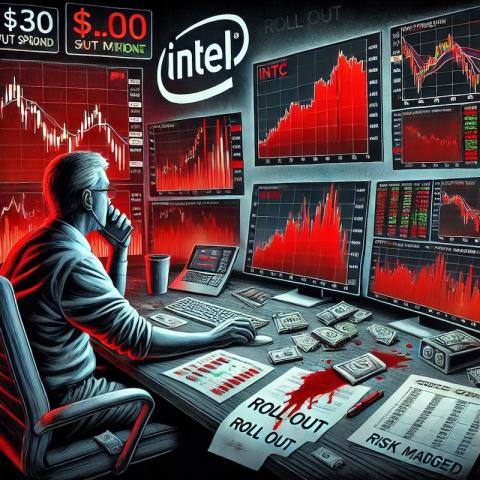This Friday turned out to be a dark day for my portfolio, with losses exceeding 12%. The most significant blow came after Intel's (INTC) negative earnings report, which saw the stock plunge over 25%. Unfortunately, I was holding a short $30 put with an August 30 expiry, and as Intel’s price dropped to $21, that position ended up deep in the money, adding significant pressure to my portfolio.
But it wasn’t just Intel that had a rough week. A wave of selling swept through most tech and bank stocks, turning my Friday deeply red. Another position in my portfolio, a short $100 put on Morgan Stanley (MS), also went in the money. To manage the risk, I rolled out this position further by a few weeks, lowering the strike price to $97. This adjustment allowed me to avoid an immediate assignment while still collecting additional premium to cushion the blow.
I also made some strategic moves to mitigate potential losses in other areas. For my September put on Ford (F) and my position in BP, I rolled them out to March, extending the time horizon and giving myself more breathing room. The premiums collected from these rolls provided some financial buffer, which I decided to reinvest by rolling the INTC $30 put down to a $29 put, pushing the expiry to November.
To further manage the downside risk from Intel's continued slump, I took a more defensive stance by implementing a ratio put spread. Specifically, I sold a short $25 put and bought three long puts at $21. This move was designed to provide additional protection if Intel's stock price continues to slide, while also introducing some new risk at the $25 level.
In hindsight, I might have panicked a bit, reacting more to the market's volatility than to the fundamentals. While there's always a chance for a recovery, especially with the tech sector's potential to bounce back, these moves were necessary to manage the risks in my portfolio. Only time will tell if they pay off, but for now, I'm keeping a close watch on the market, hoping that the worst is behind us.
